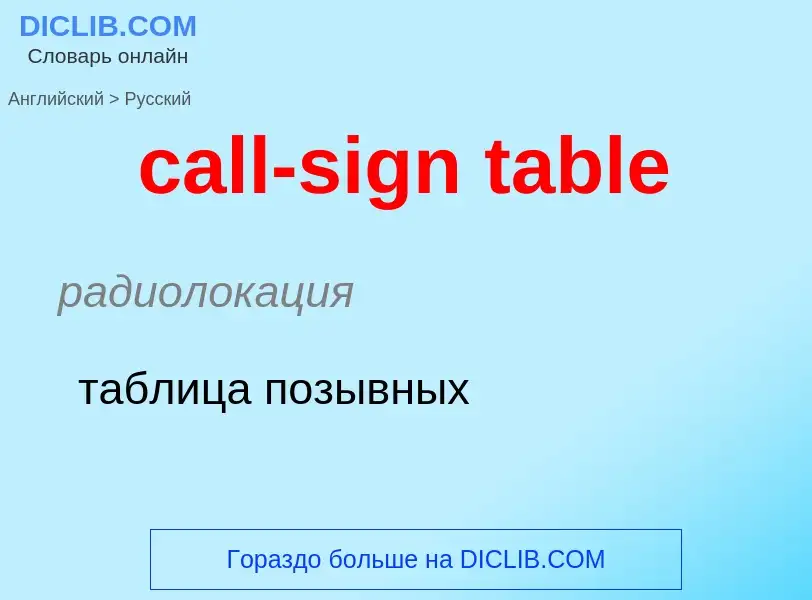Vertaling en analyse van woorden door kunstmatige intelligentie ChatGPT
Op deze pagina kunt u een gedetailleerde analyse krijgen van een woord of zin, geproduceerd met behulp van de beste kunstmatige intelligentietechnologie tot nu toe:
- hoe het woord wordt gebruikt
- gebruiksfrequentie
- het wordt vaker gebruikt in mondelinge of schriftelijke toespraken
- opties voor woordvertaling
- Gebruiksvoorbeelden (meerdere zinnen met vertaling)
- etymologie
call-sign table - vertaling naar russisch
радиолокация
таблица позывных
['kɔ:lletə]
специальный термин
позывной
сигнал по коду
существительное
общая лексика
позывной
Definitie
Wikipedia
In broadcasting and radio communications, a call sign (also known as a call name or call letters—and historically as a call signal—or abbreviated as a call) is a unique identifier for a transmitter station. A call sign can be formally assigned by a government agency, informally adopted by individuals or organizations, or even cryptographically encoded to disguise a station's identity.
The use of call signs as unique identifiers dates to the landline railroad telegraph system. Because there was only one telegraph line linking all railroad stations, there needed to be a way to address each one when sending a telegram. In order to save time, two-letter identifiers were adopted for this purpose. This pattern continued in radiotelegraph operation; radio companies initially assigned two-letter identifiers to coastal stations and stations on board ships at sea. These were not globally unique, so a one-letter company identifier (for instance, 'M' and two letters as a Marconi station) was later added. By 1912, the need to quickly identify stations operated by multiple companies in multiple nations required an international standard; an ITU prefix would be used to identify a country, and the rest of the call sign an individual station in that country.


![WWV]], indicating its early location in the U.S. state of [[Maryland]] WWV]], indicating its early location in the U.S. state of [[Maryland]]](https://commons.wikimedia.org/wiki/Special:FilePath/QSL card sent to listener confirming reception of WWV from Maryland - 194007.jpg?width=200)
